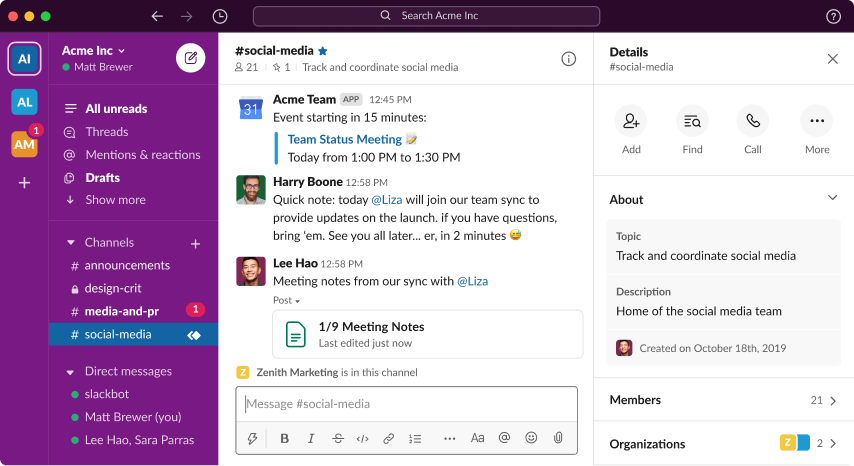

- #SLACK FOR MAC M1 CHIP HOW TO#
- #SLACK FOR MAC M1 CHIP INSTALL#
- #SLACK FOR MAC M1 CHIP UPDATE#
- #SLACK FOR MAC M1 CHIP PRO#
- #SLACK FOR MAC M1 CHIP SOFTWARE#
Terminal showing the output of uname -m as arm64 Brew Issues arm64 and aarch64 are both ARM - uname on Mac just reports it differently compared to Linux. It’ll say either X86_64, arm64 (Mac) or aarch64 (Linux). If you’re not sure about the terminal you’re using, you can type uname -m. Activity Monitor showing Zoom as an Apple process Activity Monitor showing Spotify as an Intel process Here’s how I can tell that Zoom is an ARM process, while Spotify is an X86_64 process. The easiest way to tell the difference is by opening Activity Monitor and looking at the Architecture column: if it says Apple, it’s ARM. It’s extremely easy to mistake the kind of architecture you run as.
#SLACK FOR MAC M1 CHIP HOW TO#
How to Tell What Architecture a Program Is Running As

#SLACK FOR MAC M1 CHIP UPDATE#
I should also mention that during the first few weeks I had some issues with audio skips when using Bluetooth, but an OS update fixed it (just like Apple promised).
#SLACK FOR MAC M1 CHIP INSTALL#
#SLACK FOR MAC M1 CHIP SOFTWARE#
CompatibilityĪll the software I need to use “just works”. My Xeon Linux-based workstation suddenly feels old. This is why I think ARM is the future, even if it might take a decade for the mainstream cloud to migrate over. It also means longer battery cycles for non-cloud use-cases (less waste, more bang for the buck). A number of fast-growing tech giants (besides Apple) are pouring a ton of money into making ARM work for a ton of use-cases: Nvidia (trying to buy ARM Holdings from SoftBank) and Amazon (deep investment in the new Graviton processors) are the two that primarily come to mind.Īs you might know, in processors low energy consumption (and low heat dissipation) often equates to the ability to scale processing efficiently for large workloads. It’s a pretty amazing piece of engineering, and in many ways, I think that the ARM architecture is the future. The typical first reaction that you get when using this is “it runs my Docker stack without sounding like a plane taking off?”.
#SLACK FOR MAC M1 CHIP PRO#
So I’ve been using my new M1-based MacBook Pro for a couple of months for a mix of development, email, and other things an open-source maintainer does day-to-day. In this article, Vlad reviews the Apple M1 as a cloud engineer. We make building software simpler and therefore faster – like Dockerfile and Makefile had a baby.


 0 kommentar(er)
0 kommentar(er)
